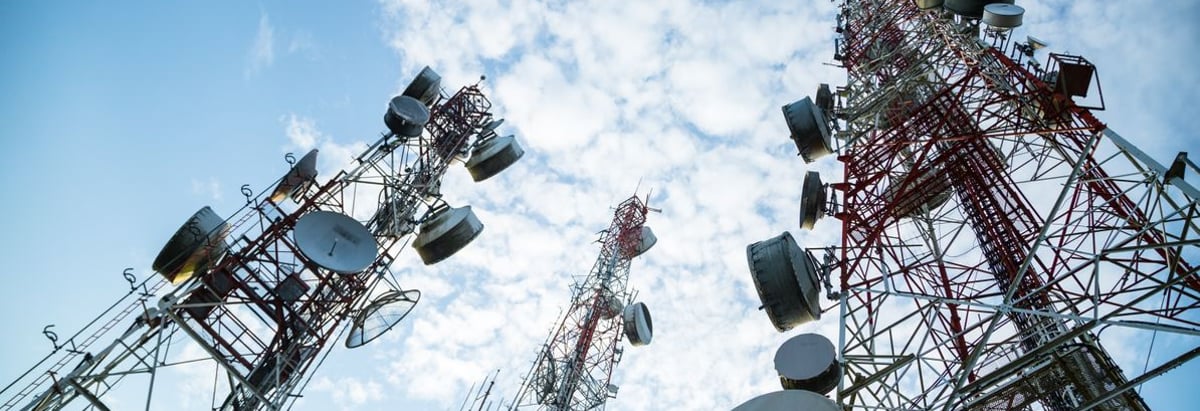
Today we are going to look at Telestrada SA (WSE:TLS) to see whether it might be an attractive investment prospect. Specifically, we're going to calculate its Return On Capital Employed (ROCE), in the hopes of getting some insight into the business.
First, we'll go over how we calculate ROCE. Next, we'll compare it to others in its industry. And finally, we'll look at how its current liabilities are impacting its ROCE.
What is Return On Capital Employed (ROCE)?
ROCE is a metric for evaluating how much pre-tax income (in percentage terms) a company earns on the capital invested in its business. All else being equal, a better business will have a higher ROCE. In the end, ROCE is a valuable metric that has its flaws. Author Edwin Whiting says to be careful when comparing the ROCE of different businesses, since 'No two businesses are exactly alike.'
So, How Do We Calculate ROCE?
Analysts use this formula to calculate return on capital employed:
Return on Capital Employed = Earnings Before Interest and Tax (EBIT) ÷ (Total Assets - Current Liabilities)
Or for Telestrada:
0.44 = zł11m ÷ (zł26m - zł5.6m) (Based on the trailing twelve months to September 2018.)
So, Telestrada has an ROCE of 44%.
Check out our latest analysis for Telestrada
Does Telestrada Have A Good ROCE?
ROCE is commonly used for comparing the performance of similar businesses. Using our data, we find that Telestrada's ROCE is meaningfully better than the 6.6% average in the Telecom industry. I think that's good to see, since it implies the company is better than other companies at making the most of its capital. Regardless of the industry comparison, in absolute terms, Telestrada's ROCE currently appears to be excellent.
In our analysis, Telestrada's ROCE appears to be 44%, compared to 3 years ago, when its ROCE was 27%. This makes us think about whether the company has been reinvesting shrewdly.

Remember that this metric is backwards looking - it shows what has happened in the past, and does not accurately predict the future. ROCE can be misleading for companies in cyclical industries, with returns looking impressive during the boom times, but very weak during the busts. This is because ROCE only looks at one year, instead of considering returns across a whole cycle. If Telestrada is cyclical, it could make sense to check out this freegraph of past earnings, revenue and cash flow.
How Telestrada's Current Liabilities Impact Its ROCE
Liabilities, such as supplier bills and bank overdrafts, are referred to as current liabilities if they need to be paid within 12 months. The ROCE equation subtracts current liabilities from capital employed, so a company with a lot of current liabilities appears to have less capital employed, and a higher ROCE than otherwise. To check the impact of this, we calculate if a company has high current liabilities relative to its total assets.
Telestrada has total assets of zł26m and current liabilities of zł5.6m. As a result, its current liabilities are equal to approximately 21% of its total assets. A minimal amount of current liabilities limits the impact on ROCE.
Our Take On Telestrada's ROCE
Low current liabilities and high ROCE is a good combination, making Telestrada look quite interesting. Of course you might be able to find a better stock than Telestrada. So you may wish to see this freecollection of other companies that have grown earnings strongly.
Of course, you might find a fantastic investment by looking elsewhere. So take a peek at this freelist of interesting companies.
To help readers see past the short term volatility of the financial market, we aim to bring you a long-term focused research analysis purely driven by fundamental data. Note that our analysis does not factor in the latest price-sensitive company announcements.
The author is an independent contributor and at the time of publication had no position in the stocks mentioned. For errors that warrant correction please contact the editor at editorial-team@simplywallst.com.
Simply Wall St analyst Simply Wall St and Simply Wall St have no position in any of the companies mentioned. This article is general in nature. We provide commentary based on historical data and analyst forecasts only using an unbiased methodology and our articles are not intended to be financial advice. It does not constitute a recommendation to buy or sell any stock and does not take account of your objectives, or your financial situation. We aim to bring you long-term focused analysis driven by fundamental data. Note that our analysis may not factor in the latest price-sensitive company announcements or qualitative material.
About WSE:TLS
Telestrada
Provides telecommunication services to business and individual customers.
Flawless balance sheet with solid track record.
Market Insights
Community Narratives


